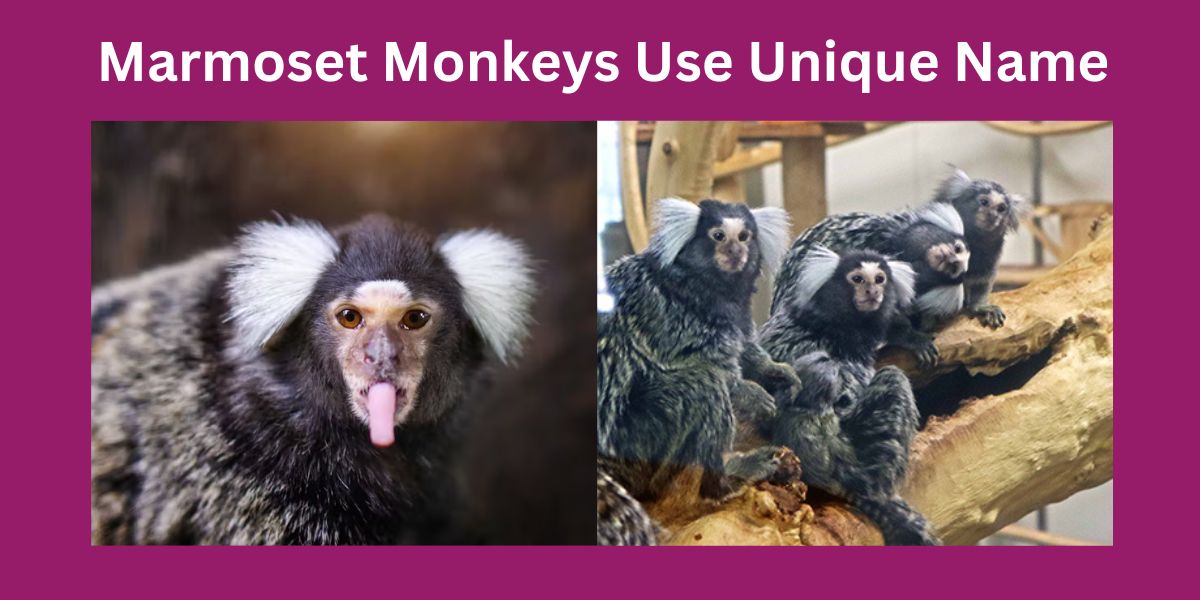Have you ever wondered if animals have their own way of naming each other, like we humans do? Well, marmoset monkeys might just surprise you! These tiny, adorable primates are showing us that they have more in common with us than we thought. They’ve got their own special way of calling each other by name! But how do these monkeys manage to communicate so uniquely, and what does it tell us about the animal world? Let’s dive in and explore this fascinating topic.
What Are Marmoset Monkeys?
The Basics of Marmoset Monkeys
Marmoset monkeys, often known as “marmosets,” are small New World monkeys that hail from the lush rainforests of South America. They are known for their distinct physical features—think of big, expressive eyes and fluffy ears that give them a perpetual look of surprise!
Tiny But Mighty
Don’t be fooled by their small size! Marmosets are social creatures with complex social structures. They live in tight-knit family groups and have an intricate way of communicating with one another. It’s this social complexity that has scientists so intrigued.
How Do Marmoset Monkeys Communicate?
A Rich Vocal Repertoire
Marmoset monkeys aren’t just chattering away without reason. They have a rich vocal repertoire, meaning they use a variety of sounds to communicate different things. From alerting others of danger to calling out for a mate, these monkeys have a sound for almost every situation.
The Science Behind Their Calls
Researchers have spent years observing marmoset monkeys to understand the purpose behind each call. And guess what? They discovered something amazing—marmosets use unique calls that function much like human names.
Do Marmosets Really Use “Names”?
What Do We Mean By “Names”?
When we say marmosets use “names,” we’re not talking about them calling each other “Bob” or “Sue.” Instead, these names are more like unique vocal signatures. Each monkey has its own distinct call that identifies it to the rest of the group.
How Was This Discovered?
Scientists used advanced recording equipment to analyze the calls of marmoset monkeys in their natural habitat. By playing back these recordings, they noticed that each monkey would respond more quickly and attentively to its own unique call than to others. It’s almost like when someone calls your name across a crowded room—your ears perk up!
Why Do Marmosets Use Unique Calls?
Communication Is Key
Marmosets live in dense, often noisy environments where visual contact isn’t always possible. Using unique vocalizations helps them maintain contact with each other, especially in situations where visibility is low.
Strengthening Social Bonds
These unique calls are also believed to strengthen social bonds within the group. By having a “name,” each marmoset can feel a sense of identity and belonging within their community, much like how we feel when someone remembers and uses our name.
The Implications of This Discovery
A Window Into Animal Communication
The discovery that marmoset monkeys use unique calls to identify each other has opened up a whole new understanding of animal communication. It suggests that the ability to recognize individuals by specific sounds is not unique to humans and may be more widespread in the animal kingdom than previously thought.
Challenging Previous Assumptions
For a long time, it was believed that the use of names or specific identifiers was a human-only trait. Marmosets challenge this notion and suggest that naming might be a more ancient and fundamental aspect of social living than we ever imagined.
How Do Marmoset Calls Compare to Human Names?
Not Exactly the Same, But Pretty Close
While marmoset calls aren’t names in the human sense, they serve a similar purpose. They help individuals stand out and allow for more effective communication within the group. Imagine if you were in a large crowd and everyone was shouting the same word—it would be chaos! Marmoset calls help avoid that kind of confusion.
Understanding the Limitations
However, it’s important to note that marmoset calls don’t convey the same range of information as human names. A human name can carry cultural, familial, and even historical significance. Marmoset calls are primarily functional, designed to capture attention and signal identity.
What Does This Mean for Other Animals?
Could Other Animals Use “Names”?
If marmosets can do it, could other animals have similar systems? It’s entirely possible! Dolphins, for instance, are known to use signature whistles that function much like names. Birds, too, have been observed using unique calls for specific individuals.
A Broader Spectrum of Communication
This discovery hints at a broader spectrum of communication abilities in animals. It raises the possibility that many species have developed unique ways to identify and call to one another, further blurring the line between human and animal communication.
The Future of Research on Animal Communication
New Questions to Explore
This breakthrough has opened up a whole new set of questions for scientists. How do these unique calls develop? Are they learned from parents or peers? Do they change over time? These are just a few of the exciting questions that researchers are now eager to answer.
The Role of Technology
Advancements in technology, like high-definition audio recording and AI analysis, are playing a crucial role in uncovering these secrets. With these tools, scientists can analyze animal sounds in ways that were never possible before.
How Can This Change Our View of Animals?
A New Respect for Animal Intelligence
Understanding that marmoset monkeys use unique calls to identify each other can change how we view animal intelligence. It shows us that animals are capable of complex social behaviors that we’re only beginning to understand.
Moving Away From Human-Centric Views
This discovery encourages us to move away from a human-centric view of intelligence and communication. Animals may have different ways of interacting and communicating, but that doesn’t make their systems any less sophisticated or worthy of study.
How to Observe Marmoset Monkeys in the Wild
Planning Your Trip
If you’re inspired to see these clever monkeys in action, consider planning a trip to the rainforests of South America. There, you can observe them in their natural habitat, calling out to each other in their own unique ways.
What to Expect
Be prepared for an adventure! Marmosets are fast and can be tricky to spot. However, with patience and a bit of luck, you might just hear their unique calls echoing through the forest.
Final Thoughts on Marmoset Communication
A Fascinating Glimpse Into the Animal World
The discovery of marmoset monkeys using unique calls to identify each other offers a fascinating glimpse into the complexity of animal communication. It challenges our understanding of what it means to be “intelligent” and reminds us that the animal kingdom is full of surprises.
Continuing the Journey of Discovery
As we continue to study these remarkable creatures, who knows what other secrets they might reveal? One thing is certain: the more we learn about animals, the more we realize just how much we have in common with them.
Conclusion
Marmoset monkeys using unique calls to name each other is a remarkable discovery that challenges our understanding of communication in the animal kingdom. It shows us that these tiny primates have developed a sophisticated system of identifying each other, much like humans do with names. This discovery not only broadens our perspective on animal intelligence but also encourages us to continue exploring the rich tapestry of communication methods found in nature.
FAQs
1. Do marmoset monkeys really use “names”?
Yes, marmoset monkeys use unique vocalizations that function similarly to names in humans. Each monkey has a distinct call that helps identify it within the group.
2. How did scientists discover this behavior in marmosets?
Researchers used advanced audio recording equipment to analyze the calls of marmoset monkeys in the wild. They found that each monkey responded more quickly to its unique call, indicating individual recognition.
3. Are marmoset calls the same as human names?
Not exactly. While marmoset calls serve to identify individuals, they don’t carry the same cultural or personal significance as human names. However, they fulfill a similar purpose of distinguishing individuals in social interactions.
4. Can other animals use similar methods to identify each other?
Yes, other animals, such as dolphins and birds, have been observed using unique vocalizations to identify individuals. This suggests that naming might be a common trait in the animal kingdom.
5. Why is this discovery important for understanding animal behavior?
This discovery challenges previous assumptions about animal intelligence and communication, showing that even small primates like marmosets have complex social behaviors. It opens up new avenues for research into animal communication and social structures.










